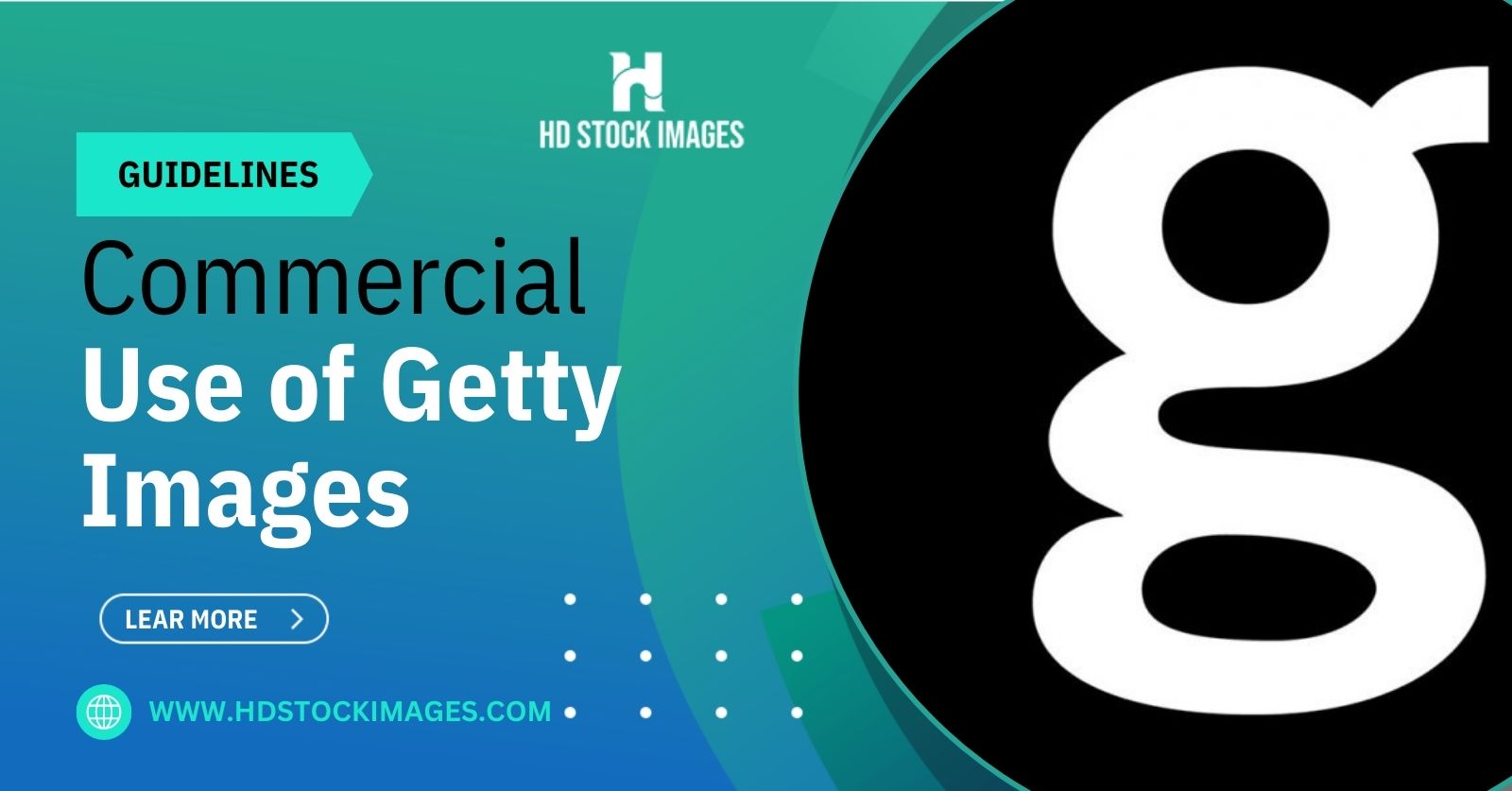In today's visually-driven world, stock photography has become an essential resource for businesses and individuals alike. With a plethora of options available, Getty Images often stands out due to its vast library and professional quality. However, understanding its pricing structure and the value it offers is crucial in determining whether it's the right choice for your needs. So, let’s dive into the importance of stock photography and how Getty Images measures up.
The Importance of Stock Photography

Stock photography plays a pivotal role in modern content creation across various industries. Whether you're a marketer, blogger, or small business owner, high-quality images can significantly enhance your projects. Here are several reasons why stock photography is vital:
- Visual Storytelling: Pictures speak volumes! They convey emotions, ideas, and messages that words sometimes cannot. Stock images can help illustrate your story compellingly.
- Brand Consistency: Using stock photos allows businesses to maintain a professional look. By carefully choosing images that align with your brand's identity, you can create a cohesive visual experience for your audience.
- Budget-Friendly: While hiring a professional photographer can be pricey, stock photography provides cost-effective alternatives. Many stock libraries, including Getty Images, offer various pricing plans to suit different budgets.
- Time-Saving: Searching for the right image from a vast library is far more efficient than staging a photoshoot. With stock photography, you can quickly find visuals that meet your needs and avoid lengthy production times.
- Diverse Selection: Stock libraries, particularly Getty Images, boast an expansive collection of images covering numerous categories. This diversity empowers creators to find the perfect picture for any project, no matter how niche.
In a digital age where visuals dominate, stock photography is not just a convenience—it's a necessity for effective communication and engagement. Whether you’re creating content for social media, marketing campaigns, or personal projects, understanding how to leverage stock resources like Getty Images is crucial.
Also Read This: 123RF vs 500px: Selecting the Right Platform for Selling Photos
Overview of Getty Images

Getty Images is one of the world's leading stock photography and digital media companies. Founded in 1995 by Mark Getty and Jonathan Klein, it has transformed how people acquire visual content. With a vast library of over 200 million assets, Getty Images offers everything from stunning photographs to illustrations and video footage, catering to a diverse clientele ranging from large corporations to individual content creators.
One of the hallmarks of Getty Images is its commitment to quality. The images available on their platform are curated from a global community of talented photographers and artists. This ensures that whether you’re looking for the perfect shot for a marketing campaign or a unique visual for a blog post, you’ll find something that not only meets but exceeds your expectations.
Additionally, Getty Images is highly regarded for its editorial content, which includes news and sports photography. This feature has made it a go-to source for journalists and media outlets seeking timely, impactful imagery. With its easy-to-use search functionality, users can quickly find exactly what they need without sifting through thousands of irrelevant results.
However, it's important to note that Getty Images operates on a licensing model, meaning that images can’t just be downloaded and used freely. Understanding their licensing terms is crucial for anyone considering using their services. So, let’s dive a bit deeper into their pricing structure and what it means for your projects!
Also Read This: How to Properly Cite Behance Creative Works
Pricing Structure of Getty Images
The pricing structure of Getty Images can be a bit intricate, but let's break it down to make it more understandable. Getty employs different pricing tiers based on the type of content, intended use, and licensing options. Here's a quick guide:
- Royalty-Free (RF): This allows for a one-time fee that lets you use the image as many times as you like, in a wide variety of contexts.
- Rights Managed (RM): This is typically more expensive; the cost varies based on factors such as duration, location, and exclusivity of use.
- Editorial Use: This pricing is often lower than commercial use, but comes with strict restrictions on how the images can be used, primarily for news and informational purposes.
To give you a clearer picture, here's a simplified pricing table:
| Content Type | Price Range |
|---|---|
| Royalty-Free Images | $15 - $500 |
| Rights Managed Images | $100 - $5,000+ |
| Editorial Images | $30 - $900 |
Keep in mind that prices can fluctuate based on factors like promotion, membership status, and image exclusivity. Also, subscribing to a monthly plan or purchasing credits can lead to discounts. When evaluating Getty Images, think about your needs—do you require high-quality images for a commercial campaign or something specific for personal use? Understanding their pricing structure helps you decide whether Getty Images aligns with your budget and project expectations.
Also Read This: how do i use adobe stock images copyright
Types of Licenses Offered
When diving into the world of Getty Images, one of the first things you'll encounter is the variety of licenses they offer. Understanding these licenses is crucial because they dictate how you can use the images you purchase. Here’s a breakdown of the main types of licenses:
- Rights Managed License: This license is tailored for specific projects. You pay based on the details of your intended use, such as the duration, location, and media type. This option is great if you need a unique image for an important campaign but can be more expensive.
- Royalty-Free License: With this license, you pay a one-time fee and gain the right to use the image multiple times without any additional cost. This is ideal for businesses that need a wide range of images for various uses but don’t want to break the bank.
- Editorial License: Designed for journalistic or non-commercial use, this license allows you to use images in articles, blogs, or educational content but prohibits alterations. If you're a content creator focusing on newsworthy topics, this is your go-to option.
- Enhanced Royalty-Free License: This is an upgraded version of the standard royalty-free license and typically includes additional usage rights like larger print runs or cover usage. It's useful if you're aiming to elevate your brand’s visibility.
Choosing the right license depends on your specific needs, so make sure to assess each carefully before making a commitment!
Also Read This: Transferring Images to Linoleum Blocks for Printmaking
Factors to Consider Before Purchasing
Before you dive into purchasing images from Getty, it’s important to consider a few key factors. This step ensures that you’re not only spending wisely but also selecting images that truly resonate with your brand. Here are some factors to keep in mind:
- Budget: How much are you willing to spend? Getty Images can be pricier than other stock photo websites, so it's essential to establish a budget beforehand.
- Usage Rights: Think about where and how you’ll be using the images. Will it be for social media, print ads, or website use? Different licenses come with different rights, so choose wisely.
- Quality and Relevance: Make sure the images reflect your brand’s identity and message. High-quality images tend to attract more attention, so don’t settle for anything less.
- Exclusivity: Are you looking for something unique? Consider opting for Rights Managed licenses if you want to ensure that your chosen image isn’t widely used by others. This can elevate your marketing campaigns significantly.
- Future Needs: Think ahead! If you're working on a long-term project or campaign, consider how your imagery needs might evolve. It might be worth investing in a package deal for multiple images if they will all be used together.
By weighing these factors, you’ll be better prepared to make an informed decision that meets your needs and budget!
Also Read This: Discover the Quick and Easy Way to Download Facebook Stories Online for Seamless Sharing
7. Alternatives to Getty Images
When it comes to sourcing high-quality images, Getty Images is often one of the first platforms that comes to mind. However, it's not the only player in the game. There are several other options out there that cater to different needs, budgets, and styles. Let’s dive into some of these alternatives!
- Shutterstock: One of the biggest competitors to Getty Images, Shutterstock offers a vast library of photos, illustrations, and videos. Its flexible pricing models, including subscriptions and on-demand packs, make it accessible to different types of users.
- Adobe Stock: If you’re already using Adobe Creative Cloud products, Adobe Stock can be integrated seamlessly into your workflow. It offers high-quality images and videos, with subscription plans tailored to frequent users.
- iStock: Owned by Getty Images, iStock provides affordable stock images. With a credit-based payment system, it’s ideal for smaller projects or businesses working with limited budgets.
- Pexels: Free for personal and commercial use, Pexels has a great collection of high-resolution images contributed by talented photographers from around the globe. If you’re on a tight budget, this is an amazing resource!
- Unsplash: Known for its stunning, high-quality images, Unsplash also offers a wide array of shots that are free to use. This platform focuses on artistry, making it a favorite among many creatives.
Each of these alternatives has its unique strengths. Consider what you need in terms of licensing, image quality, and pricing to find the perfect fit for your projects.
8. Conclusion: Making an Informed Decision
Choosing the right stock image provider is crucial to the success of your projects, whether you’re a freelancer, small business owner, or content creator. Getty Images undoubtedly offers exceptional quality and a vast library, but it also comes at a price that may not suit everyone.
As we've explored the various aspects of Getty Images pricing and some alternatives, here are a few key takeaways to help you make an informed decision:
- Assess your budget: Understand how much you can allocate for images. If Getty’s pricing seems high, don’t hesitate to explore alternatives.
- Define your needs: What type of images do you require, and how frequently will you need them? A subscription service may work better for consistent needs, while single purchases may suffice for occasional projects.
- Compare quality and licensing: Investigate whether the image quality or licensing terms of alternatives meet your standards and requirements.
At the end of the day, whether you choose Getty Images or one of its alternatives, what matters most is that you find a service that aligns with your creative vision and budget. Make sure to weigh your options carefully and go with what feels right for you!
 admin
admin








